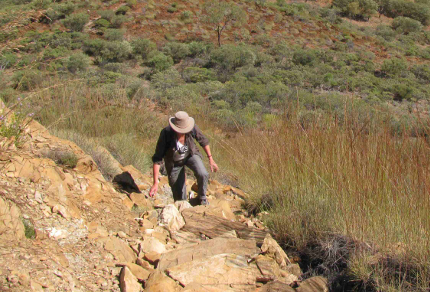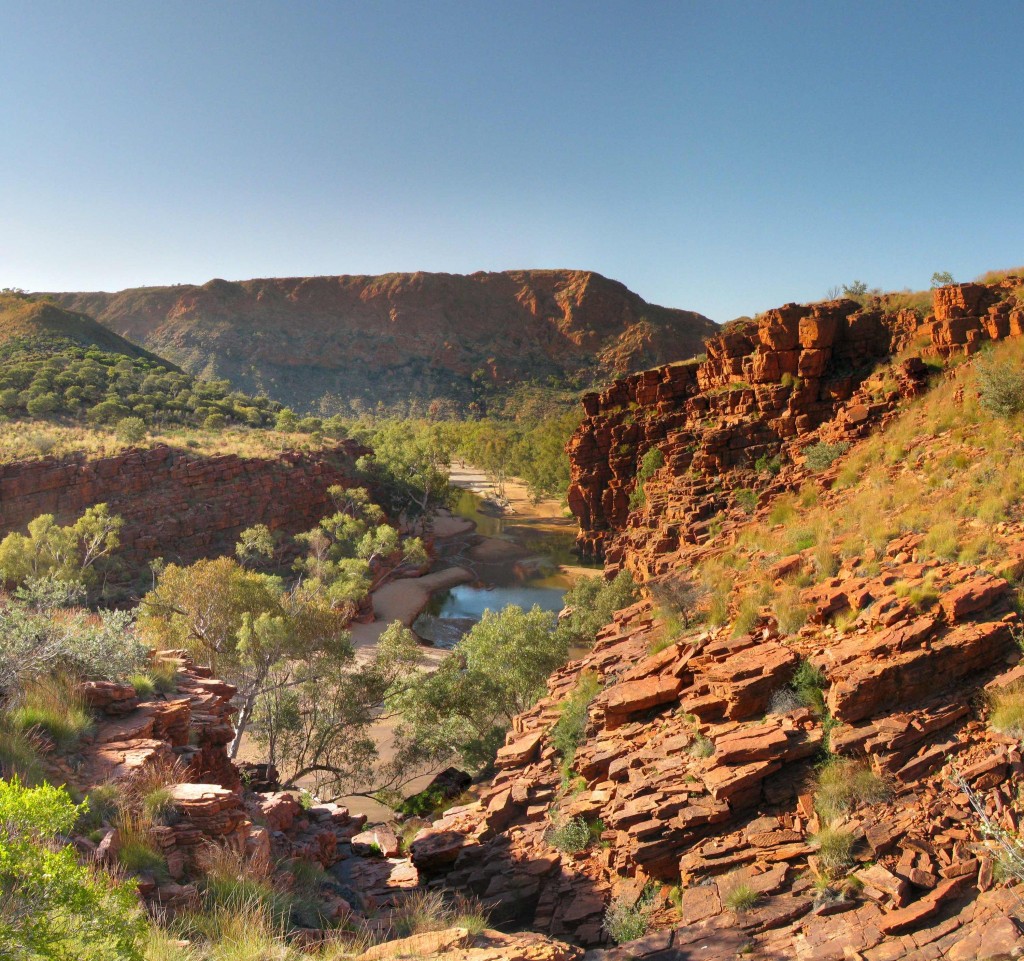
Trephina Gorge, Trephina Gorge National Park, Northern Territory (© Vilis Nams)
In the cold freshness of the desert dawn, pied butcherbirds, white-plumed honeyeaters, and yellow-throated miners serenaded Vilis and me into wakefulness in the campground at Trephina Gorge. In the night, we had heard dingoes howling – wild voices ringing against the darkness and linking with our memories of wolves in Canada’s north country. I tugged on gloves, toque (beanie), and jacket to stave off the morning chill, but removed them soon after breakfast, when Vilis and I headed off on the Gorge Walk in rapidly-heating air beneath brilliant blue skies.
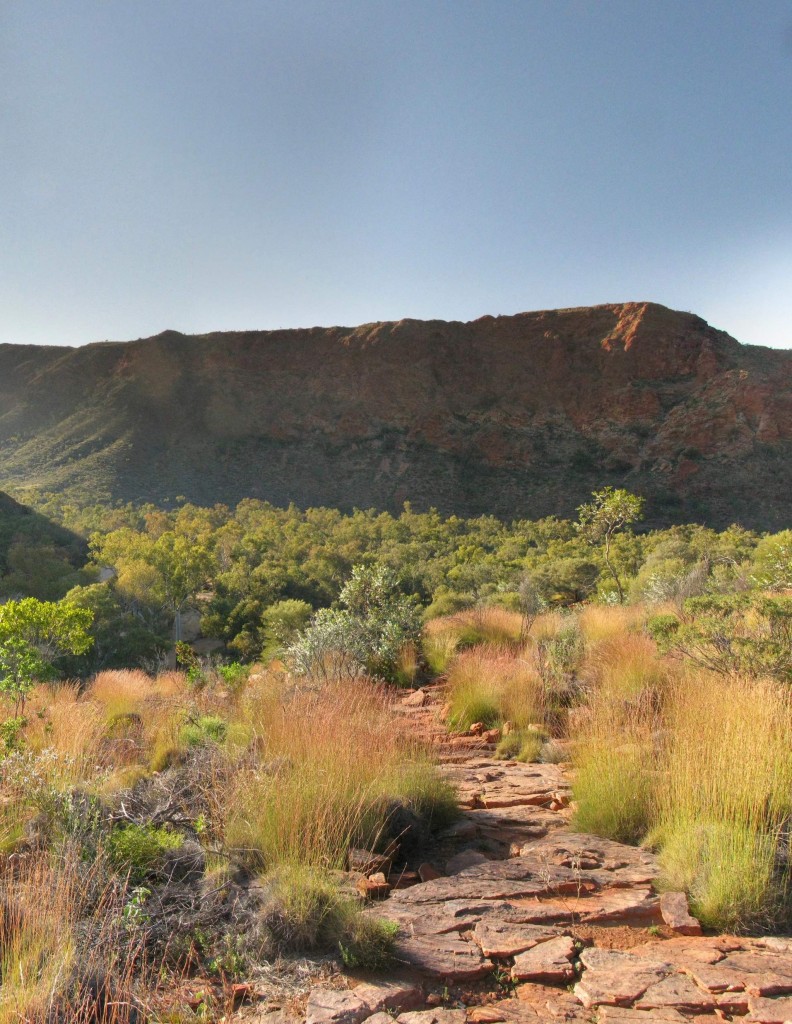
Gorge Walk on Trephina Gorge Rim (© Vilis Nams)
Budgies greeted us at Trephina Creek with bubbling, buzzing vocalizations, the tiny, brightly-hued parrots attending nests in broken-off branches and tree hollows. We followed a path along the west side of the creek, climbing natural steps formed of broken, red rock layers of the vivid quartzite comprising the sheer walls of Trephina Gorge. The stepping stone rocks led us to the rim of the gorge, where a wee male hooded robin basked on a stunted tree in early morning sun and a grey-headed honeyeater foraged for nectar in a low, yellow-blossoming shrub. Wildflowers, spinifex grasses, shrubs, and trees found purchase in nooks and crannies in the rock that lay like red pavement beneath our feet on the gorge rim. From our vantage point, we looked down onto the creek lined with river red gums and out over a desert wilderness of rocky ridges, sprawling lowlands, and slashing river gorge. For sheer grandeur, the Gorge Walk was one of the most impressive tracks I’ve ever hiked.
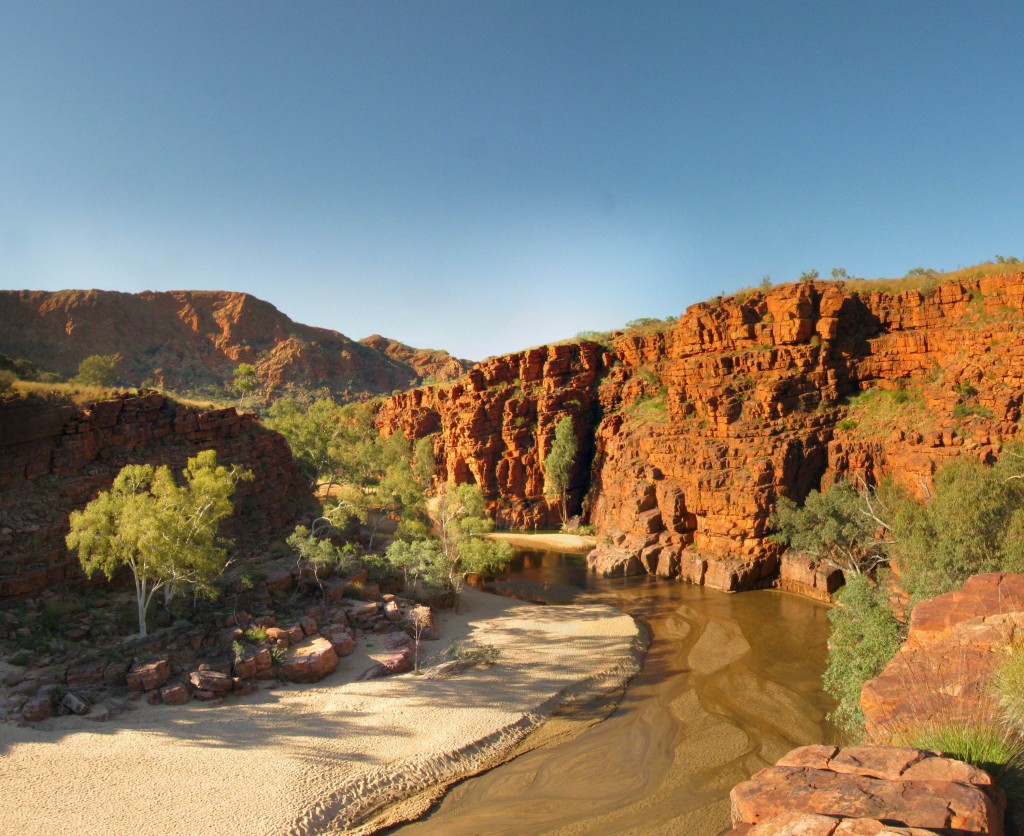
Trephina Gorge and Creek (© Vilis Nams)
We descended from the gorge rim to the level of the creek, removing our shoes and socks to wade cold, knee-deep water and stroll the sandy creekbed. Sunlight lit the western, red face of sheer gorge wall, highlighting the wheeling and diving flight of fairy martins, and making it easy to spot the martins’ bottle nests formed of mud pellets fastened to the undersides of rock ledges. An oasis vegetated with tall river red gums and ghost gums in the surrounding desert of spinifex and shrubs, Trephina Creek was a pale, sandy lifeline winding through the rugged uplands, some rearing ramparts of reaching red, like bastions of some ancient fortress. It was alive with the songs of budgies, grey shrike-thrushes, and zebra finches. Black-fronted dotterels, a kind of small plover, foraged on spits of sand, and a pair of sacred kingfishers guarded their nesting territory at the edge of the creek.
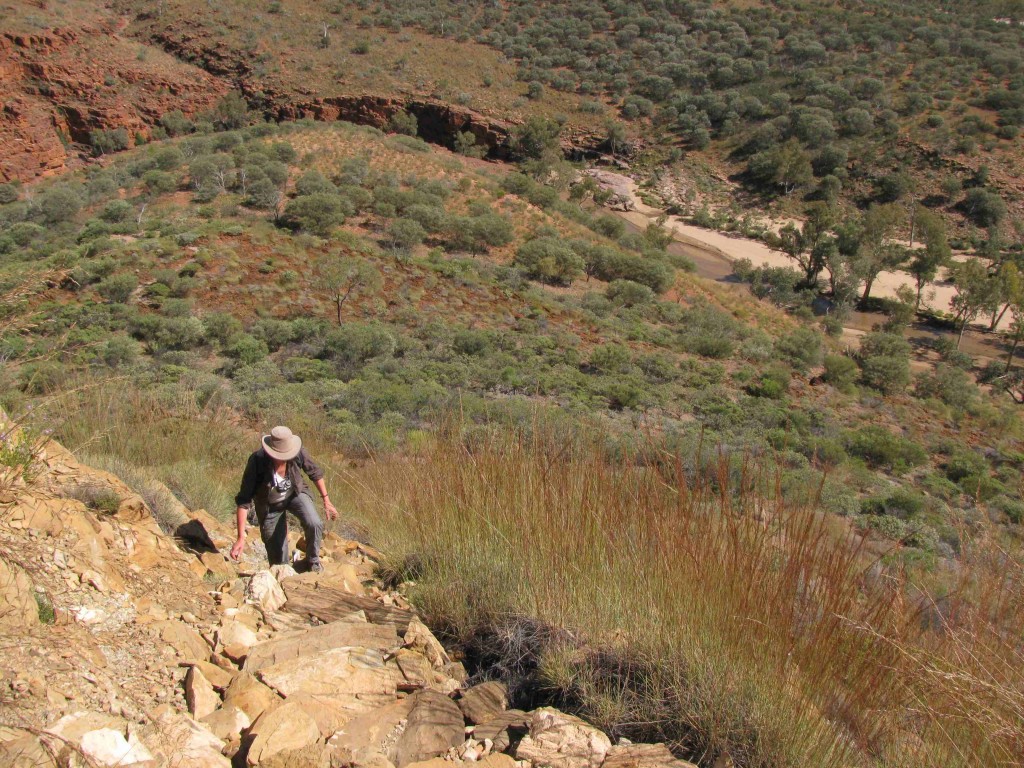
Here I am on Panorama Walk above Trephina Creek (© Vilis Nams)
After a quick snack back at the campground, Vilis and I crossed the creek and climbed upward again, this time on Panorama Walk, which led us to the summit of a rocky hill on the eastern side of the gorge. We bushwalked among natural rock gardens of wildflowers, including poached-egg daisies, and seeding clumps of spiky spinifex with leaves like stabbing needles. Little woodswallows with chocolate and dark grey plumages highlighted by white-tipped tails and underwings perched in a dead tree on the summit, and a perky dusky grass-wren hopped among spinifex-bordered rocks. Sweeping views spilled out before us, covering hundreds of square kilometres of desert.
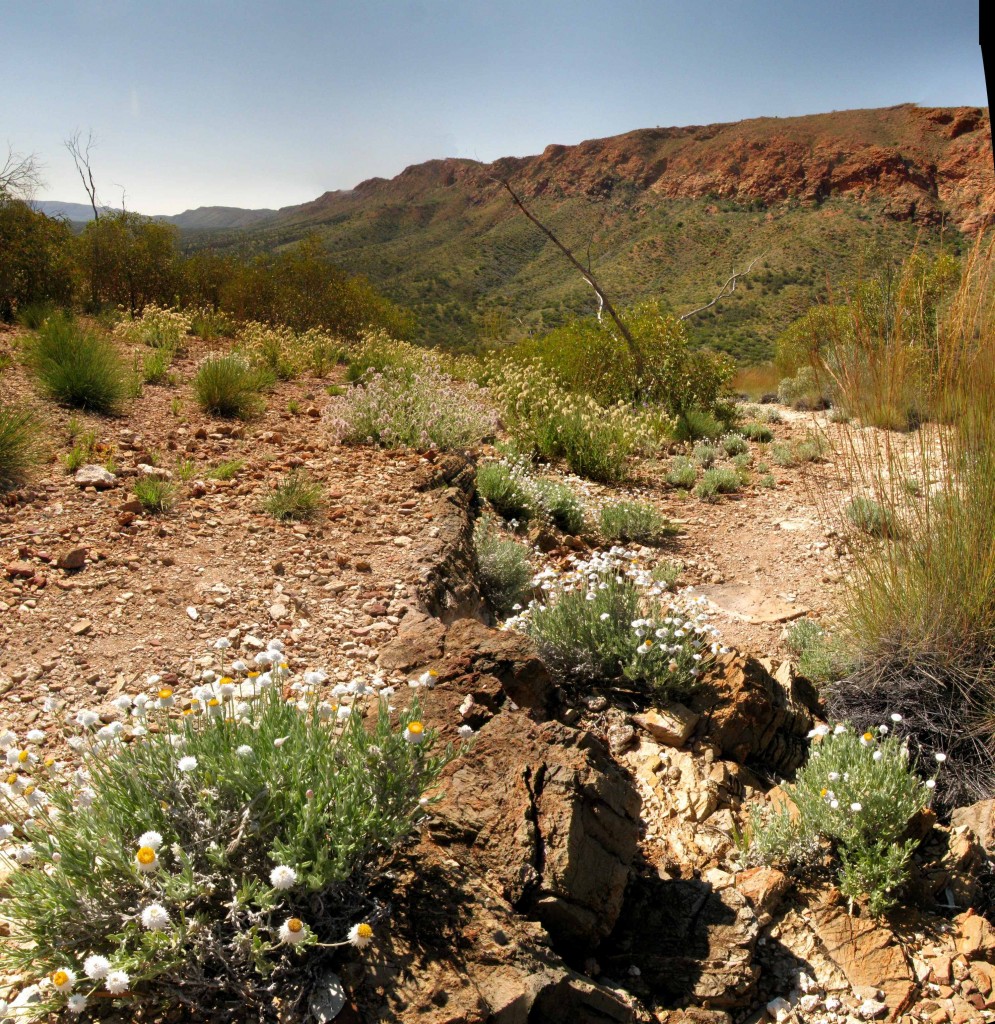
Panorama Walk. with Poached-egg Daisies (© Vilis Nams)
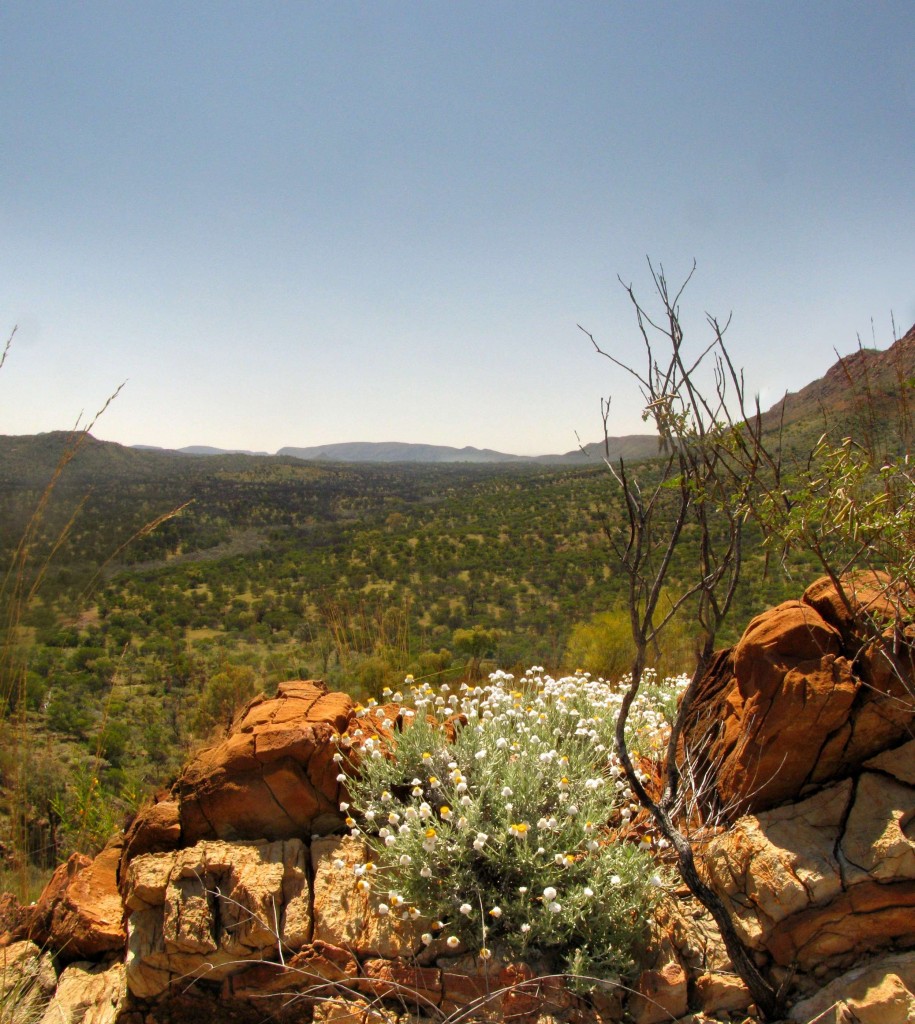
Natural Rock Garden, Panorama Walk (© Vilis Nams)
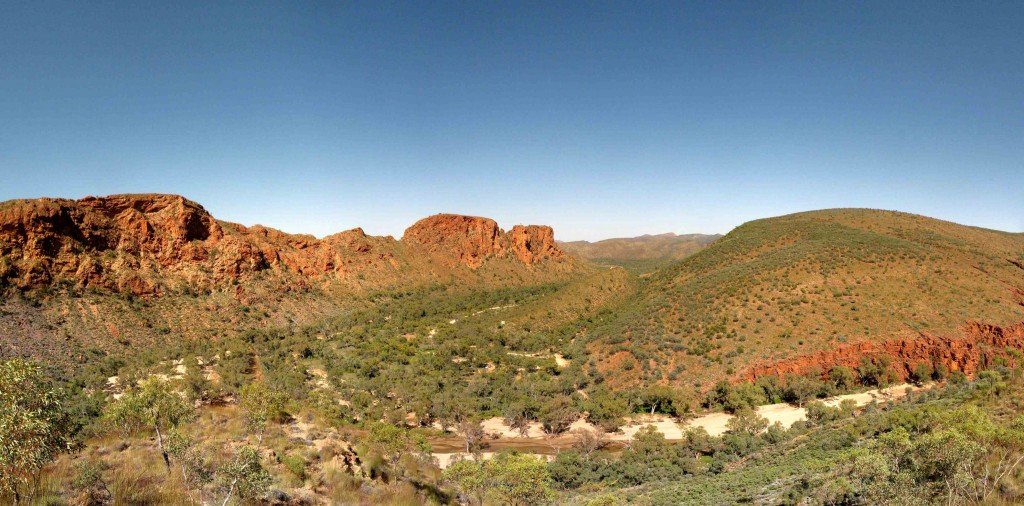
View South from Panorama Walk, Trephina Gorge National Park (© Vilis Nams)
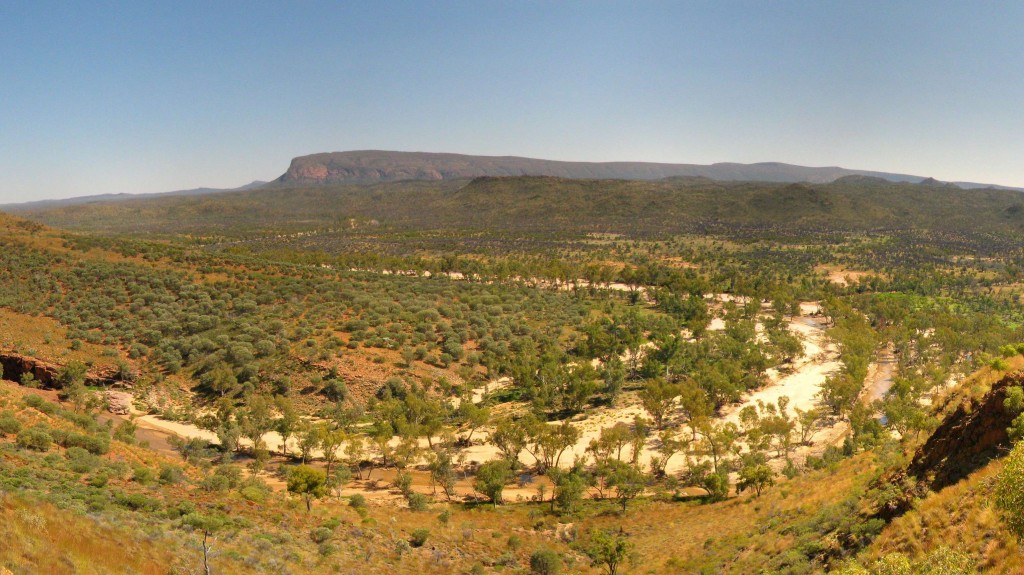
View North from Panorama Walk, Trephina Gorge National Park (© Vilis Nams)

Here I am at the summit of Panorama Walk. (© Vilis Nams)
On leaving the summit, we descended through spinifix grassland having clumps taller than I am. Locusts flushed from within spinifex clumps on our approach, their wings clattering against the seed stalks, the insects flying up to form small clouds. Diamond doves with white-speckled, gray plumages and red eyes flitted among shrubs, and a red-backed kingfisher – the first I’d seen – perched in a short eucalypt, its streaked head and orange-red lower back clearly visible. Completing the loop walk, we skirted the creek and then waded across it to once again reach the campground.
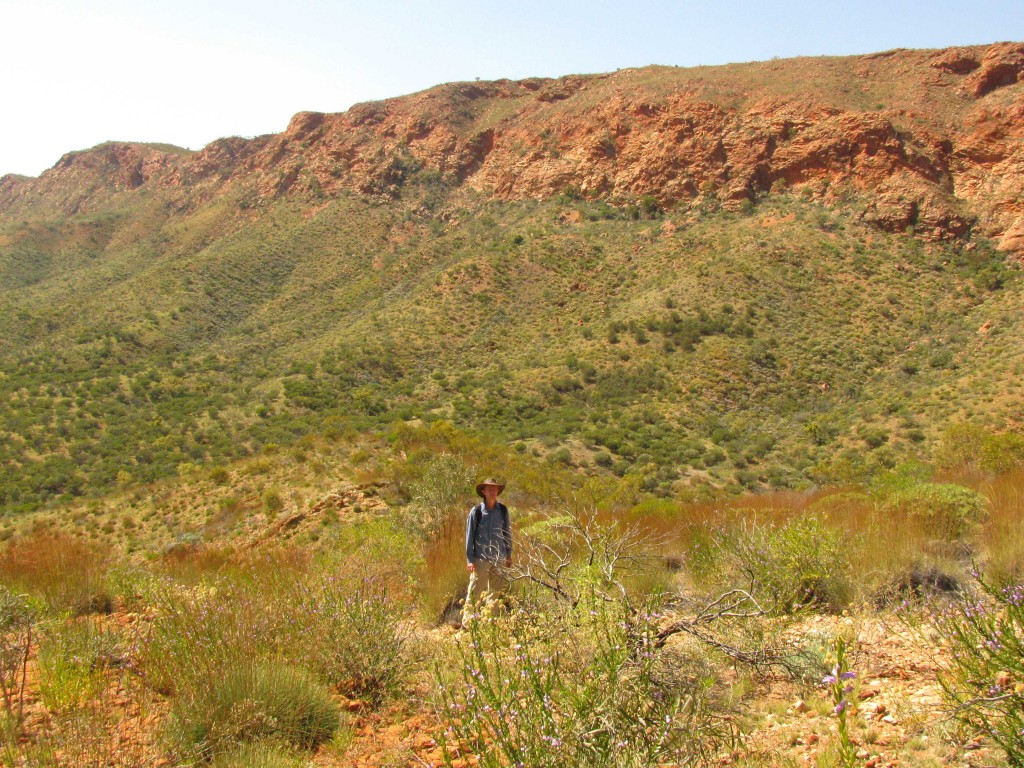
Vilis on Panorama Walk (© Magi Nams)
After an early lunch, we broke camp and retraced our path westward on the Ross Highway to Alice Springs, driving past rolling ranges of rocky hills in shades of red and yellow ochre and olive, nubbed with rounded trees and shrubs and a veneer of pale green. Tall, thick spinifex clumps shone pinkish-purple in the sun and waved in the breeze. Flowering shrubs bore blossoms of purple, pink, yellow, and orange, while herbs wore pale silvery-blue foliage or vivid green splashed with rich purple flowers. Paddy melons lay round and yellow in pastures and on the road edges, and rugged, lone-standing buttes towered over red sand plains.
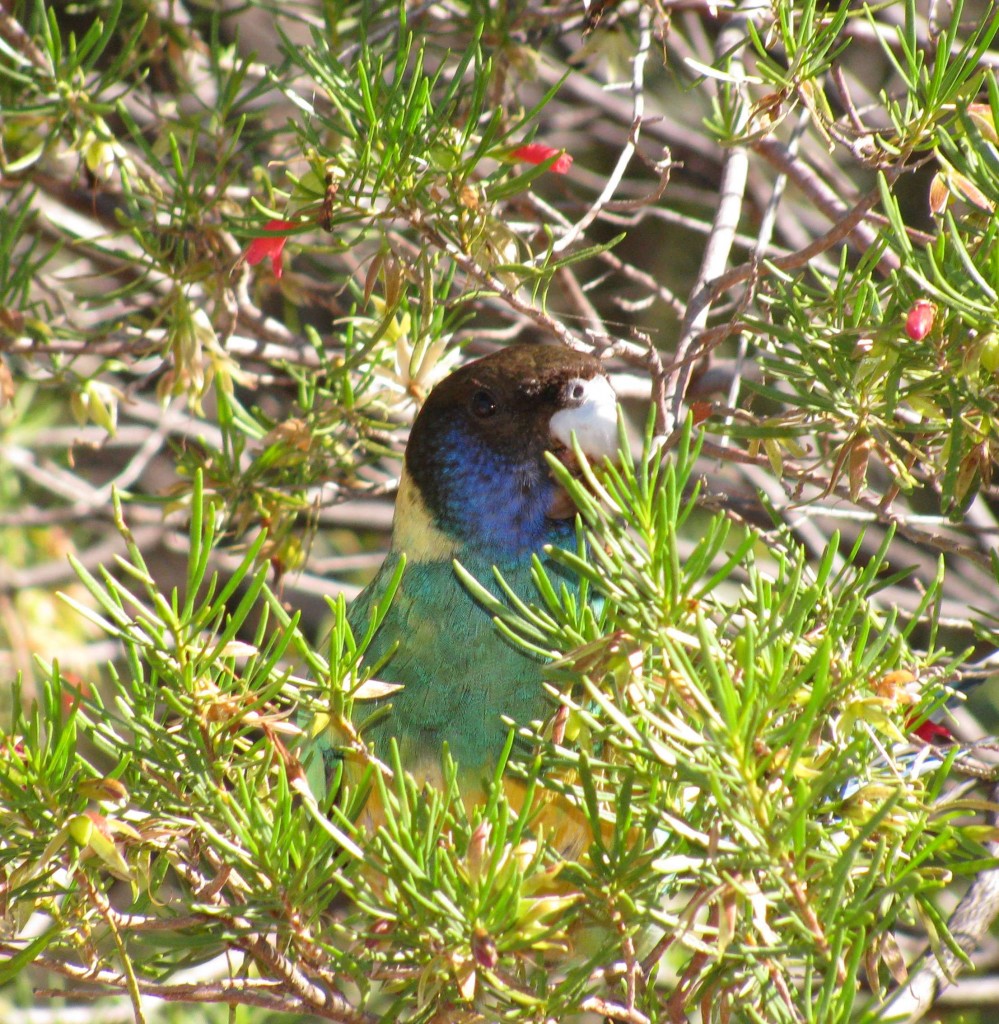
Western Ringneck, Ormiston Gorge (© Magi Nams)
We stocked up on supplies in Alice Springs, which Vilis several times referred to as Whitehorse, so great was our impression of the similarity of this wild country to that of Canada’s Yukon Territory. Then we drove west on Larapinta Drive past Alice Springs Desert Park and turned onto Namatjira Drive, access to the western reaches of West MacDonnell National Park. Dodging dragons basking on the bitumen, we drove through a long valley spiked by the skeletons of burnt trees, the paved road dipping frequently to concrete floodways over streambeds.
We reached our destination of Ormiston Gorge in late afternoon and erected our tent in a campground set in scrubby desert shrubland beside a deep waterhole in Ormiston Creek. A whistling kite soared overhead, spinifex pigeons pecked in the sand beside our tent, and western ringnecks fed on flowers in needle-leaved shrubs behind our campsite.
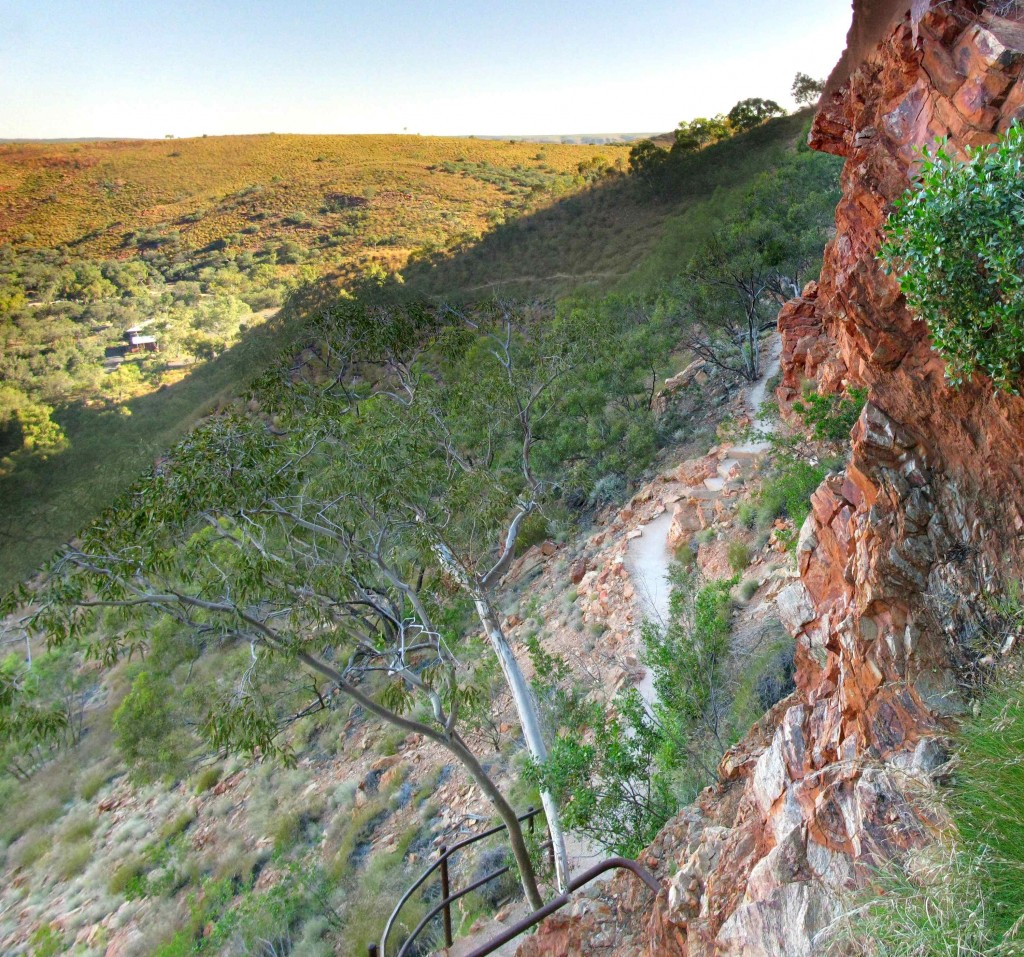
Track to Ormiston Gorge Lookout (© Vilis Nams)
With daylight quickly fading, Vilis and I hiked a track to the lookout above Ormiston Gorge, and then down to the edge of the creek. Deep water stretched from rock wall to rocky shoreline, allowing us to see why the track condition information provided by the park included a warning that the Ormiston Pound Walk, a loop track that we had planned to hike tomorrow, would require swimming in the gorge section. We changed our plan to a return walk and revelled in views of the stunning, two-kilometre length of Ormiston Gorge, its walls broken, red rock colonized by tenacious shrubs and elegant ghost gums with roots like clawing fingers.
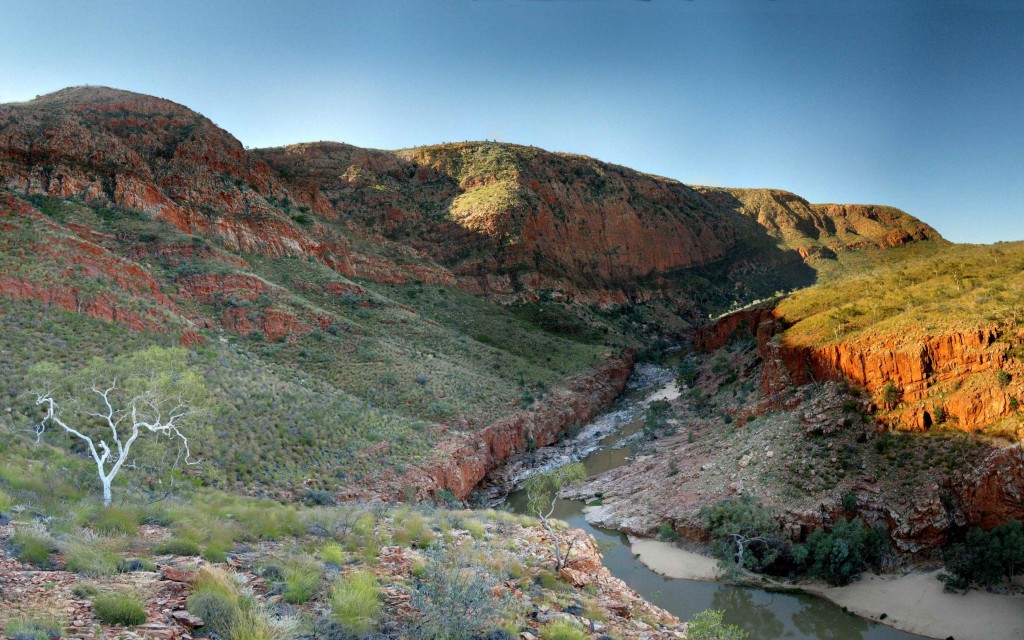
Ormiston Gorge in Evening Light (© Vilis Nams)
Today’s birds: pied butcherbird, white-plumed honeyeaters, yellow-throated miners, budgies, *hooded robin, fairy martins, black-faced cuckoo-shrikes, *grey-headed honeyeater, black-fronted dotterels, *grey shrike-thrushes, zebra finches, rufous songlark, sacred kingfishers, mistletoebird, *dusky grasswren, rufous whistler, *little woodswallows, *red-backed kingfisher, galahs, little crows, magpie-larks, white-faced heron, whistling kite, western ringnecks, spinifex pigeons, peaceful dove, budgies, brown honeyeater. Also observed long-nosed dragon. (*denotes lifelist sighting)

